niacinamide vs retinol: Can you use them together?
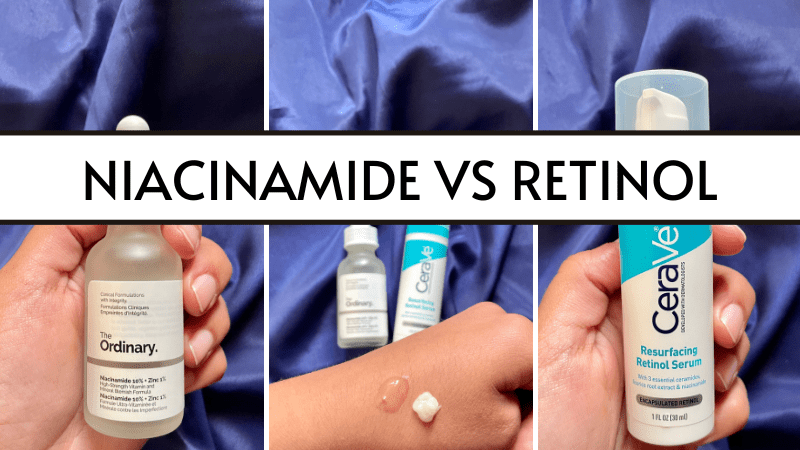
I only recommend products I love and I think you will, too. If you click on links I provide, I may receive a little compensation. Learn more.
Let’s shut the debate of niacinamide vs retinol once and for all!
When it comes to skincare, it’s hard to keep up with what works and what doesn’t. Luckily, two of the most popular ingredients in today’s skincare products are retinol and niacinamide. But a few burning questions always remain: Can you use retinol and niacinamide together? How are they different and is it even worth it?
Let’s find out!
What Is Retinol?
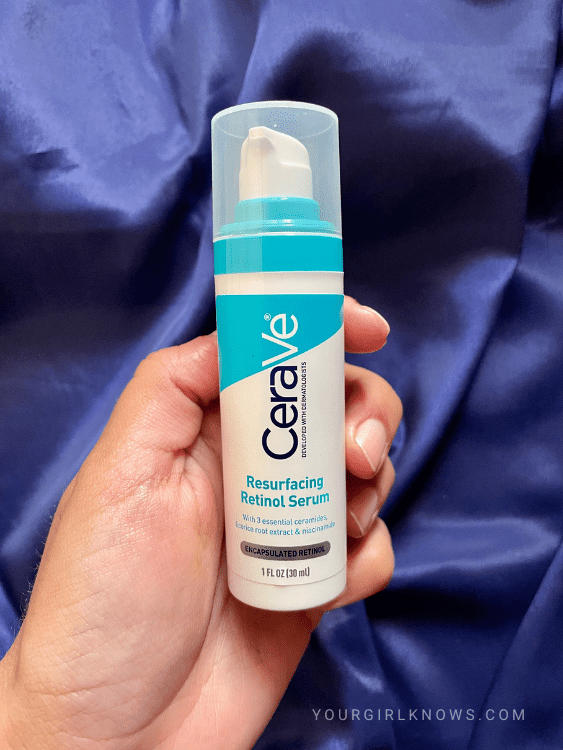
Retinol is a form of Vitamin A commonly used in skin care products for its ability to reduce wrinkles, improve the appearance of sun-damaged skin, even out skin tone, and treat acne.
It is typically found in over-the-counter products but can be prescribed by a doctor at a higher strength. If you’re looking for an anti-aging ingredient that will truly make a difference in your skin, then retinol is definitely worth considering.
Benefits of retinol for the skin
- Reduces wrinkles and fine lines by boosting collagen production
- Brightens the skin
- Improves overall tone and texture
- Promotes cell turnover
- Repairs quickly
- Smoother and firmer skin
- Healthier and more youthful appearance
Commonly used concentration in skincare products
Generally, the commonly used concentration of retinol in skincare products is 0.3% to 1%. You should always, always start with the lowest concentration, introduce it to your skin once or twice a week, and gradually increase the usage and concentration once your skin adapts to it.
What Is Niacinamide?
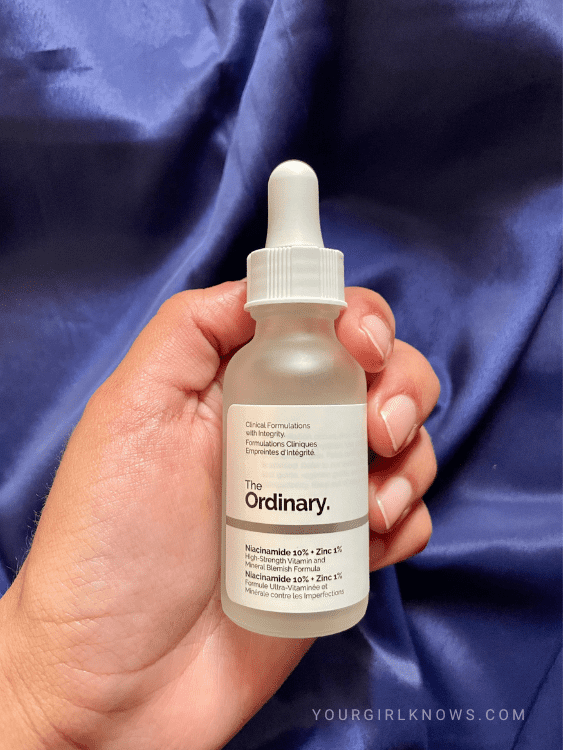
Niacinamide is a potent form of Vitamin B3, found in many skincare products. Unlike retinol, niacinamide does not cause irritation to the skin but still offers some amazing benefits, including hydration, improved texture and tone, reduction of redness, and protection from environmental damage. This makes it an excellent choice for those with sensitive skin or those who are just starting out with skin care products.
Benefits of niacinamide for the skin
- Improves overall skin texture and appearance
- Reduces wrinkles and fine lines
- Lightens dark spots and acne scars
- Strengthens the skin barrier and prevents dehydration
- Reduces inflammation and redness
- Soothes irritations
Commonly used concentration in skincare products
Generally, the commonly used concentration of niacinamide in skin care products is 5% to 10%. It is considered much safer than retinol so you’re free to use it once every day.
Niacinamide vs Retinol: Comparison
| Basis | Niacinamide | Retinol |
|---|---|---|
| Uses | Improves skin texture, tone, and brightness; helps reduce the appearance of wrinkles and fine lines; minimizes pore size; addresses dullness due to environmental damage | Reduces wrinkles, fine lines, age spots, acne, and uneven skin tone; helps thicken the epidermis |
| Absorbency | It seeps into the deeper layer of the skin, providing you with overall benefits | It only absorbs into the topmost layer of the skin. |
| Irritation Potential | Low | High |
| Breakouts | Can help reduce breakouts in some cases | Can cause breakouts if used in high concentrations or not properly cleansed off |
| Skin Type Suitability | Generally suitable for all skin types | Can be too strong for sensitive or dry skin and should usually be avoided on those types |
| Results | Results take a few weeks to become apparent | Results are usually noticeable after 1-2 months of consistent use |
Which is better niacinamide or retinol?
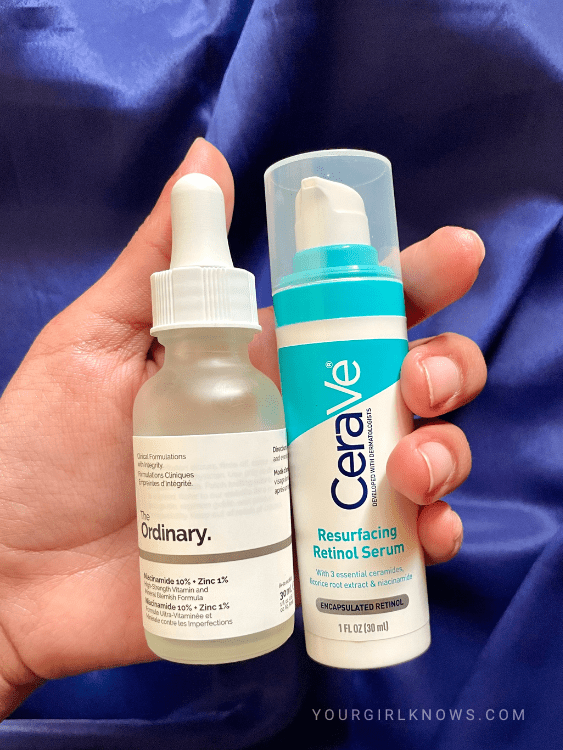
Since both these ingredients are magic potions on their own, the question of choosing one over the other really does depend upon the skin issue you’re focusing on.
If you have sensitive skin or are prone to redness and inflammation and want to overall increase the elasticity and radiance of the skin, you may prefer niacinamide. If you’re looking for a more intense anti-aging treatment, retinol may be a better choice.
You can also consider using both ingredients in your skincare routine, as they can complement each other and provide a well-rounded approach to skincare.
Do I need retinol if I use niacinamide?
Umm, let’s answer this question: Are you in your 20s or over your 30s? If you are in the first age yet, you are free to choose just niacinamide. But if you choose the latter one, retinol is probably your best bet.
Basically, retinol is a stronger, more potent ingredient that does most of the things that niacinamide do – just a lot faster. Which is why you may not always need retinol if you’re using niacinamide until and unless you are looking to reverse aging.
Can you use niacinamide and retinol together?
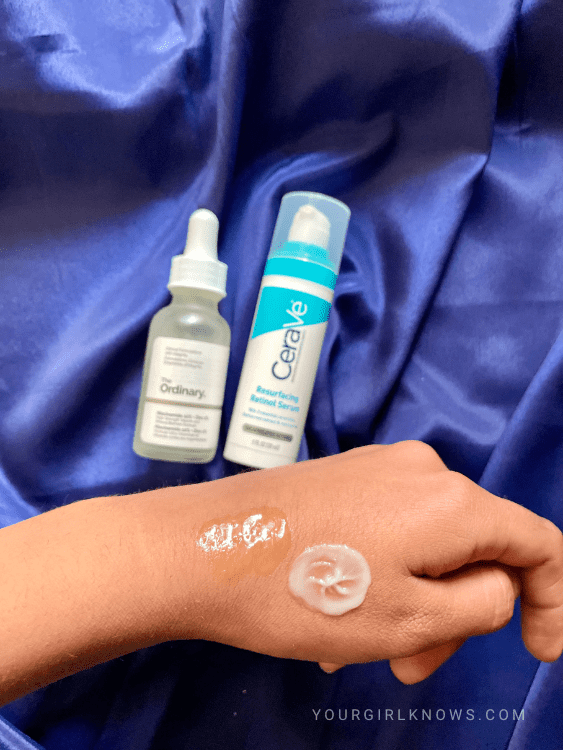
The answer is yes! The two ingredients work well together to provide great results without irritating your skin. However, if you have sensitive skin, it’s best to introduce each ingredient slowly into your routine so that your skin can adjust before adding more products.
Additionally, when using both ingredients together, it’s important to apply them at different times—apply the retinol first, followed by the niacinamide, as this helps minimize irritation while maximizing benefit.
Possible side effects of using the two together
While niacinamide and retinol are duos to tackle most of your skin concerns in one go, combining them can lead to some possible side effects, including:
- Irritation, redness, and flaking: Both niacinamide and retinol can be irritating to the skin, especially when used in high concentrations or when the skin is not acclimated to them. Using both ingredients together may increase the risk of irritation.
- Sun sensitivity: Using them together can make the skin more sensitive to the sun, so it’s important to use a broad-spectrum sunscreen when using these ingredients together.
- Purging: Retinol can cause a temporary increase in breakouts, known as purging, as it helps to clear clogged pores. This can be exacerbated when used with niacinamide, which can also increase the risk of breakouts in some people.
This is why it’s essentially important to start slow when using these ingredients together and to monitor your skin for any signs of irritation or sensitivity.
If you experience any side effects, it may be necessary to reduce the frequency of use or switch to a lower concentration of the ingredients. Always consult with a dermatologist if you have any concerns about using niacinamide and retinol together.
How to use Niacinamide and Retinol together?
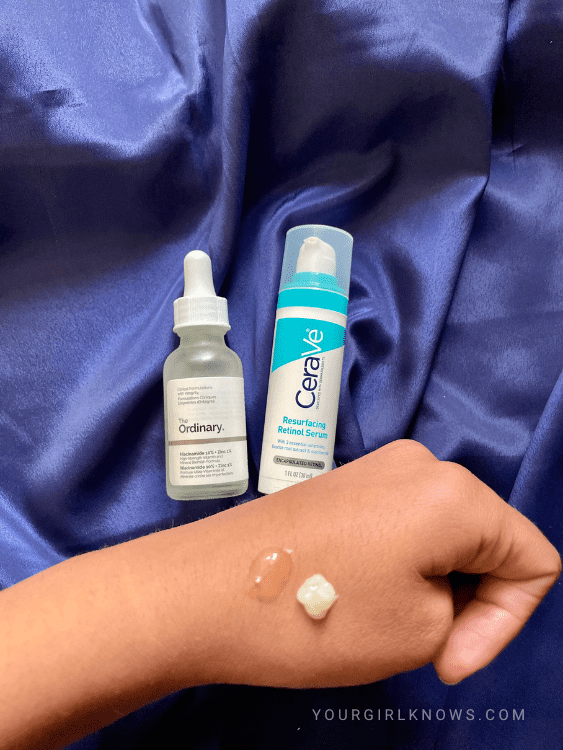
When using these two ingredients together, it’s important to note that they should be applied at different times of the day.
Niacinamide should be applied in the morning after cleansing as part of your regular skincare routine. Retinol should be applied at night before bed as part of your nighttime skincare routine. This will ensure that each ingredient has enough time to absorb into the skin before being covered up by makeup or other products during the day.
Additionally, it’s a good idea to start off with small doses of each product before gradually increasing over time as your skin gets used to them.
Of course, they can also be combined into one product! Many skincare brands offer products specifically formulated with both niacinamide and retinol, so you don’t have to worry about applying them separately or worrying about them mixing together improperly.
These products are usually recommended for those who want a more intensive anti-aging regimen since they contain higher levels of both ingredients than what would typically be found in separate formulations.
What to apply first, niacinamide or retinol?
Now, skincare is applied in order of thinner to thicker consistency like cleanser < toner < antioxidant serum < eye cream < spot treatment < moisturizer < face oil < sunscreen.
So, one of choosing what comes first can be to in what way you are using them. For instance, if you’re using a retinol serum and a niacinamide moisturizer, you’ll obviously apply the serum first and then seal it in with a moisturizer, shutting the confusion once and for all.
However, if you’re using both the ingredients in a serum formula, you’ll apply niacinamide first, wait for a minute or two and then layer retinol over as retinol is more potent than niacinamide.
What is better for acne retinol or niacinamide?
As supported by this study, a product that features both retinol and niacinamide will be the best treatment for making acne disappear. However, if you have to choose something for oily, acne-prone skin, go for retinol, as it can handle that. In comparison, opt for niacinamide if you’re a dry or sensitive skin type.
conclusion on niacinamide vs retinol
Retinol and niacinamide are both great ingredients for improving the look of your skin without causing any irritation. By using them together, you can get even better results without risking any unwanted side effects.
Just remember to start slowly and apply each ingredient at different times so that your skin has time to adjust before adding more products to your routine! With these tips in mind, you’ll be able to get glowing skin quickly and safely!
Related articles to niacinamide vs retinol
- How To Use Retinol- A Complete Guide On Using This Magic Skincare Ingredient!
- Can You Use Niacinamide And Hyaluronic Acid Together?
- How To Use Glycolic Acid In Your Skincare Regime?
- How To Exfoliate Underarms: Get Glowing Armpits
- Can I Use Azelaic Acid And Niacinamide Together

